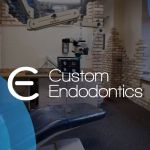Preventing Gum Recession: Tips and Solutions for a Healthier Smile
- Introduction
- Understanding Gum Recession
- Common Causes of Gum Recession
- Effective Prevention Tips
- Treatment Options for Gum Recession
- Real-Life Stories of Gum Recession Prevention
- When to See a Dentist
- Conclusion
Gum recession is a common dental problem that can lead to tooth sensitivity, decay, and even tooth loss if not addressed. Preventing gum recession is crucial for maintaining oral health and ensuring that your smile stays youthful and vibrant. In this article, we'll explore effective methods for preventing gum recession, common causes, and treatment options that can help restore your gum health.
Understanding Gum Recession
Gum recession occurs when the gum tissue that surrounds the teeth wears away or pulls back, exposing more of the tooth or its root. This condition can make your teeth look longer, cause tooth sensitivity, and increase the risk of cavities in the exposed areas. Preventing gum recession involves understanding its causes and adopting the right oral care practices to protect your gums.
Common Causes of Gum Recession
Several factors can contribute to gum recession, including:
- Poor Oral Hygiene: Not brushing and flossing regularly can lead to plaque buildup, which can cause gum inflammation and recession over time.
- Genetics: Some people are genetically predisposed to thinner or weaker gums, making them more susceptible to recession.
- Brushing Too Hard: Using a hard-bristled toothbrush or brushing with excessive force can wear down the gum tissue.
- Tobacco Use: Smoking or chewing tobacco can contribute to gum disease and recession.
- Hormonal Changes: Hormonal fluctuations during pregnancy, menopause, or puberty can make gums more vulnerable to recession.
- Grinding Teeth: Bruxism, or grinding your teeth, can put pressure on your gums and cause them to recede.
Effective Prevention Tips
Fortunately, gum recession can often be prevented or slowed down with the right care. Here are some essential prevention tips:
- Maintain Good Oral Hygiene: Brush your teeth twice a day with a soft-bristled toothbrush and floss daily to remove plaque and reduce the risk of gum disease.
- Use the Right Brushing Technique: Avoid brushing too hard. Instead, use gentle, circular motions to clean your teeth and gums.
- Regular Dental Checkups: Visit your dentist regularly for professional cleanings and early detection of gum issues.
- Quit Smoking: Tobacco products significantly increase the risk of gum disease and recession, so quitting smoking is crucial for gum health.
- Manage Teeth Grinding: If you grind your teeth at night, consider wearing a mouthguard to reduce pressure on your gums and teeth.
Treatment Options for Gum Recession
If gum recession has already occurred, there are several treatments available to restore gum health and protect your teeth:
- Scaling and Root Planing: A deep cleaning procedure that removes plaque and tartar buildup from below the gum line and smooths the roots to help the gums reattach.
- Gum Grafting: A surgical procedure in which healthy gum tissue is taken from another area in your mouth and grafted onto the recessed areas.
- Regenerative Procedures: In cases where the underlying bone is damaged, regenerative procedures such as bone grafting may be used to promote tissue regrowth.
Real-Life Stories of Gum Recession Prevention
Meet Emily, a 40-year-old woman who noticed her gums receding after years of aggressive brushing. After consulting with her dentist, Emily switched to a soft-bristled toothbrush and started using proper brushing techniques. Her dentist also recommended regular cleanings to keep her gums healthy. Within a few months, Emily saw a noticeable improvement, and her gums stopped receding.
Another example is Tom, who had a history of teeth grinding at night. After using a mouthguard recommended by his dentist, Tom experienced less pressure on his gums and saw a reduction in gum recession. His dentist also worked with him on stress management techniques to help reduce nighttime grinding.
When to See a Dentist
If you notice that your gums are receding or you're experiencing tooth sensitivity, it's important to see a dentist as soon as possible. Early intervention can prevent further damage and help you find the best solution to restore your gum health.
Conclusion
Preventing gum recession is essential for maintaining a healthy smile and preventing further oral health issues. By following proper oral hygiene practices, addressing risk factors, and seeking professional care when needed, you can protect your gums and enjoy a confident, healthy smile for years to come. For more information on gum health and to schedule a consultation, visit Dentistry Toothtruth.







 Tri-City Smiles Dentistry and Orthodontics4.0 (180 review)
Tri-City Smiles Dentistry and Orthodontics4.0 (180 review) River Run Dental4.0 (356 review)
River Run Dental4.0 (356 review) Chapman Family Dentistry5.0 (196 review)
Chapman Family Dentistry5.0 (196 review) Dr. Dhaval Shah, DDS1.0 (1 review)
Dr. Dhaval Shah, DDS1.0 (1 review) Custom Endodontics4.0 (67 review)
Custom Endodontics4.0 (67 review) Brick Dental Studio4.0 (101 review)
Brick Dental Studio4.0 (101 review) The Importance of Oral Health Education During Pregnancy for a Healthy Pregnancy
The Importance of Oral Health Education During Pregnancy for a Healthy Pregnancy Best Tips for Brushing Your Teeth Properly for Healthy Gums: Essential Techniques for Oral Health
Best Tips for Brushing Your Teeth Properly for Healthy Gums: Essential Techniques for Oral Health Why Skipping Dental Checkups Can Lead to Bigger Oral Health Problems
Why Skipping Dental Checkups Can Lead to Bigger Oral Health Problems Advantages of Porcelain Dental Restorations
Advantages of Porcelain Dental Restorations How Can Diabetes Cause Tooth and Gum Problems? Preventing and Managing Oral Health Issues
How Can Diabetes Cause Tooth and Gum Problems? Preventing and Managing Oral Health Issues Healthy Habits for Promoting Good Oral Health and Hygiene: Tips for a Healthy Smile
Healthy Habits for Promoting Good Oral Health and Hygiene: Tips for a Healthy Smile